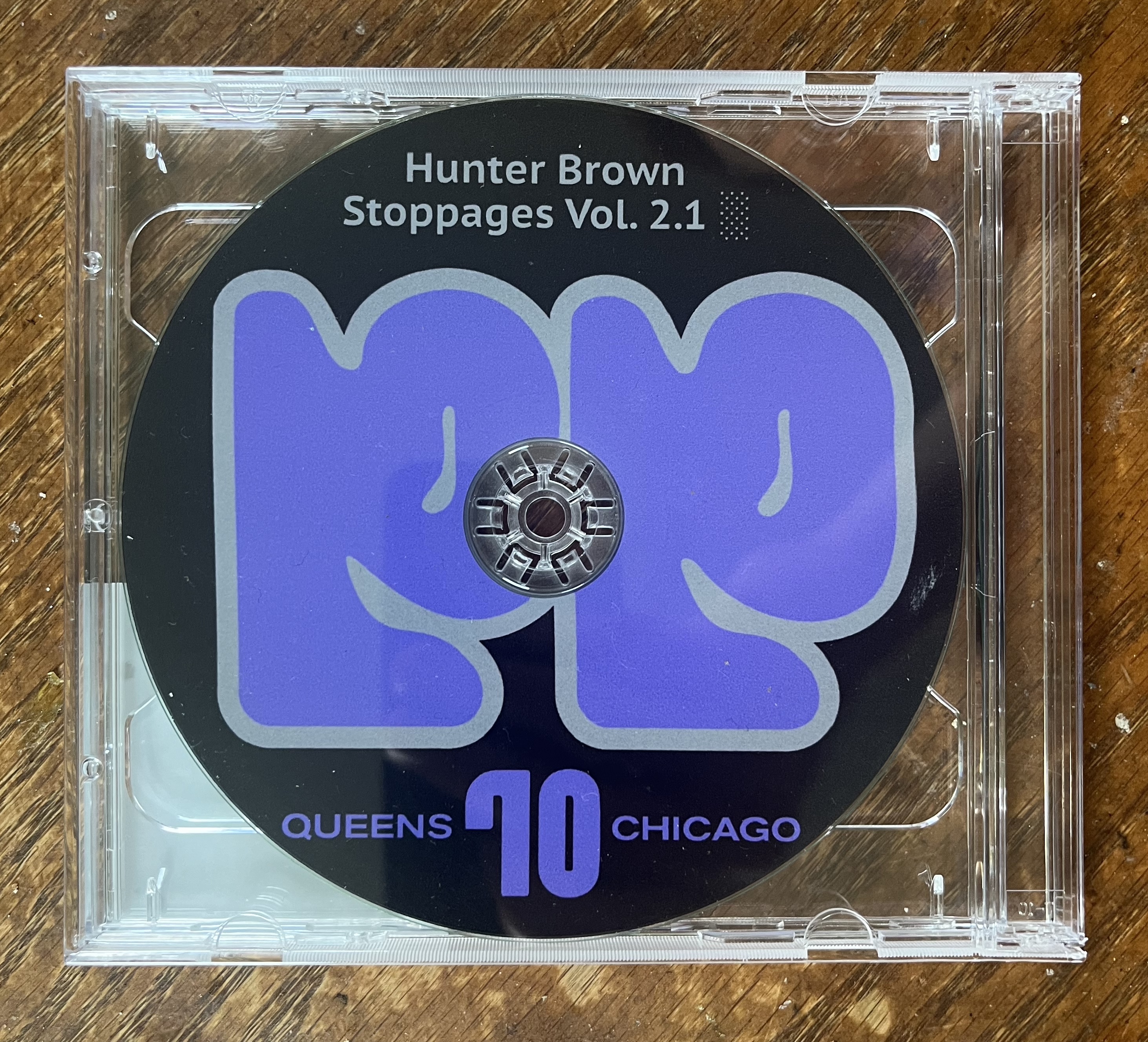Stoppages Vol. 2 ░ - Hunter Brown
The physical materials that make up audio reproduction technologies influence and alter the sounds that they reproduce.
Furthermore, the manner in which a sound object is represented within audio storage media fundamentally alters the perception
of the sound object. Take the vinyl record, where sound waves are represented as physical grooves etched into polyvinyl chloride
discs. This form of representation imparts surface noise (crackles, pops, rumbles) onto the sound object, while restricting the
frequency fidelity of the sound object due to the finite thickness of the disc. These physical characteristics meditate sonic
representation and have the potential to transform a sound object into something other; a new sound object containing affective
resonances distinct from its original form. Terms like “the cloud,” “streaming,” and “virtual” point to the digital as an
immaterial entity that forgoes imparting its materiality onto sound objects. But is this really the case? What mediating processes
transform real-world sound objects into binary data and back again; and do these processes affect the sounds we hear?
Stoppages Vol. 2 investigates how sound is represented in the digital domain through manipulations to the MP3 codec. The MP3’s encoding process induces intentional data loss through perceptual audio coding. Perceptual audio coding employs psychoacoustic modeling to remove “perceptually irrelevant data” that the human auditory system cannot allegedly perceive. This process alters the representation of a sound object in order for it to take up less harddrive space, making it easier to reproduce and distribute. Furthermore, the MP3 embodies an assumed universal mode of listening and perception where timbral delicacy, western tonality, and naturality are paramount. For example, Suzanne Vega’s “Tom’s Diner” was one of the sonic benchmarks for tuning the MP3, embedding its sonic characteristics in how the MP3 listens to, interprets, and processes audio [1]. Like polyvinyl chloride discs, the way MP3s represent sound mediates the auditory experience. But unlike its analog predecessors, the implementation of arcane perceptual technics within the representation process imposes an array of sonic ideals upon the listening experience.
This collection of 20 compositions is a rendering of techniques that directly subvert and intervene in the MP3’s perceptual audio coding process. The first of which is processing sounds through the MP3 that have qualities diametrically opposed to those privileged by the MP3. Due to the distinctly digital qualities of Stoppages Vol. 1, Stoppages Vol. 2 uses Vol. 1 as its source material. The brackets in Vol. 2’s track titles indicate which tracks from Vol. 1 were used. Subsequent techniques include manipulations to the psychoacoustic models implemented within the MP3’s perceptual audio coding algorithm. This repurposing of the MP3 as a generative process reorients the ear beyond the MP3’s supposed universal mode of listening and towards an alternative listening; where something other emerges from the latent properties of this standardized format.
[1] For more on the MP3 codec and the role of “Tom’s Diner” and other audio samples, see Jonathan Sterne’s MP3: The Meaning of a Format
Stoppages Vol. 2 investigates how sound is represented in the digital domain through manipulations to the MP3 codec. The MP3’s encoding process induces intentional data loss through perceptual audio coding. Perceptual audio coding employs psychoacoustic modeling to remove “perceptually irrelevant data” that the human auditory system cannot allegedly perceive. This process alters the representation of a sound object in order for it to take up less harddrive space, making it easier to reproduce and distribute. Furthermore, the MP3 embodies an assumed universal mode of listening and perception where timbral delicacy, western tonality, and naturality are paramount. For example, Suzanne Vega’s “Tom’s Diner” was one of the sonic benchmarks for tuning the MP3, embedding its sonic characteristics in how the MP3 listens to, interprets, and processes audio [1]. Like polyvinyl chloride discs, the way MP3s represent sound mediates the auditory experience. But unlike its analog predecessors, the implementation of arcane perceptual technics within the representation process imposes an array of sonic ideals upon the listening experience.
This collection of 20 compositions is a rendering of techniques that directly subvert and intervene in the MP3’s perceptual audio coding process. The first of which is processing sounds through the MP3 that have qualities diametrically opposed to those privileged by the MP3. Due to the distinctly digital qualities of Stoppages Vol. 1, Stoppages Vol. 2 uses Vol. 1 as its source material. The brackets in Vol. 2’s track titles indicate which tracks from Vol. 1 were used. Subsequent techniques include manipulations to the psychoacoustic models implemented within the MP3’s perceptual audio coding algorithm. This repurposing of the MP3 as a generative process reorients the ear beyond the MP3’s supposed universal mode of listening and towards an alternative listening; where something other emerges from the latent properties of this standardized format.
[1] For more on the MP3 codec and the role of “Tom’s Diner” and other audio samples, see Jonathan Sterne’s MP3: The Meaning of a Format
July 26th 2024


